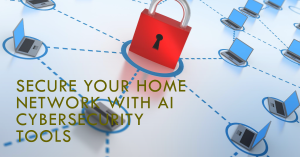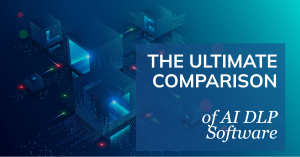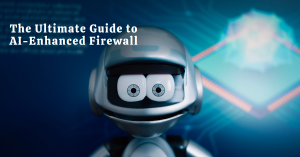The Internet of Things (IoT) revolution has transformed how we live, work, and interact with technology. With billions of connected devices worldwide, IoT has enabled unprecedented automation and data exchange across various sectors, from smart homes and healthcare to manufacturing and transportation. However, this connectivity also brings significant cybersecurity challenges. IoT devices are often vulnerable to cyberattacks due to their limited processing power, lack of robust security measures, and diverse platforms and protocols. This is where Artificial Intelligence (AI) comes into play, offering advanced solutions to bolster the cybersecurity of IoT devices. In this comprehensive article, we will explore the critical cybersecurity challenges faced by IoT devices, the role of AI in mitigating these risks, and the top AI-driven cybersecurity solutions available today.
Understanding the Cybersecurity Challenges of IoT Devices
Before delving into AI-driven solutions, it is crucial to understand the specific cybersecurity challenges associated with IoT devices:
1. Limited Security Features
Many IoT devices are designed with minimal processing power and storage capacity, leaving little room for comprehensive security features. This makes them easy targets for cybercriminals.
2. Diverse Ecosystem
The IoT ecosystem is highly diverse, encompassing various devices, platforms, and communication protocols. This diversity complicates the implementation of uniform security standards.
3. Insecure Communication
IoT devices often communicate over unsecured networks, making them susceptible to interception, eavesdropping, and man-in-the-middle attacks.
4. Lack of Regular Updates
Many IoT devices do not receive regular software updates or patches, leaving them vulnerable to known vulnerabilities and exploits.
5. Large Attack Surface
The number of connected IoT devices expands the attack surface, providing multiple entry points for cybercriminals to exploit.
6. Data Privacy Concerns
IoT devices collect vast amounts of data, including sensitive personal information. Ensuring the privacy and security of this data is a significant challenge.
The Role of AI in Enhancing IoT Cybersecurity
Artificial Intelligence (AI) has emerged as a powerful tool in addressing the cybersecurity challenges of IoT devices. AI technologies, including machine learning, deep learning, and natural language processing, offer advanced threat detection, anomaly detection, and automated response capabilities. Here are some key ways AI enhances IoT cybersecurity:
1. Advanced Threat Detection
AI algorithms can analyze vast amounts of data from IoT devices to identify patterns and anomalies that indicate potential threats. Machine learning models can be trained on historical data to recognize new and emerging threats, enabling proactive threat detection.
2. Anomaly Detection
AI-driven anomaly detection systems can monitor IoT device behaviour in real time, identifying deviations from normal patterns that may indicate a security breach. This allows for early detection and mitigation of potential threats.
3. Automated Response
AI can automate responses to security incidents, such as isolating compromised devices, blocking malicious IP addresses, and applying security patches. This rapid response minimizes the window of opportunity for attackers and reduces potential damage.
4. Predictive Analytics
AI-powered predictive analytics can forecast potential security threats based on historical data and current trends. This enables organizations to take preventive measures and strengthen their security posture.
5. Behavioral Analysis
AI can perform behavioural analysis of IoT devices to detect unusual activities. By understanding the expected behaviour of devices, AI can identify deviations that may indicate malicious activities.
6. Enhanced Encryption
AI can enhance encryption techniques by developing more robust encryption algorithms and managing encryption keys more effectively. This ensures secure communication between IoT devices and protects data from interception.
7. Real-Time Monitoring
AI-driven cybersecurity solutions can provide real-time monitoring of IoT networks, identifying and mitigating threats as they occur. This continuous monitoring is crucial for maintaining the security of IoT environments.
Top AI-Driven Cybersecurity Solutions for IoT Devices
Several AI-driven cybersecurity solutions are available to protect IoT devices from cyber threats. Here are some of the top solutions:
1. Darktrace
Overview:
Darktrace is a leading AI-driven cybersecurity platform that leverages machine learning and behavioural analysis to detect and respond to threats in real time. It is particularly effective in securing IoT environments.
Key Features:
- Self-Learning AI: Darktrace’s AI continuously learns from the network’s behaviour, adapting to new threats and anomalies.
- Anomaly Detection: Detects unusual behaviour in IoT devices, indicating potential security breaches.
- Automated Response: Automatically responds to threats by isolating compromised devices and mitigating attacks.
- Threat Visualizations: Provides detailed visualizations of threats and network activity for better understanding and response.
Benefits:
- Proactive Threat Detection: Identifies and mitigates threats before they can cause significant damage.
- Continuous Learning: The AI adapts to new threats, ensuring up-to-date protection.
- Minimal Human Intervention: Automated responses reduce the need for manual intervention, enhancing efficiency.
2. CylancePROTECT
Overview:
CylancePROTECT is an AI-powered endpoint protection solution that uses machine learning to prevent cyber threats. It is designed to secure various types of endpoints, including IoT devices.
Key Features:
- Predictive Threat Prevention: Machine learning models predict and prevent threats before execution.
- Lightweight Agent: The lightweight agent is suitable for resource-constrained IoT devices.
- Zero-Day Protection: Protects against unknown threats and zero-day exploits.
- Offline Protection: Provides security even when devices are offline or disconnected from the network.
Benefits:
- Advanced Threat Prevention: Predictive capabilities ensure threats are stopped before they can cause harm.
- Resource Efficiency: The lightweight agent is ideal for IoT devices with limited resources.
- Comprehensive Coverage: Protects against a wide range of threats, including zero-day exploits.
3. Cisco IoT Threat Defense
Overview:
Cisco IoT Threat Defense is a comprehensive security solution that protects IoT environments. It integrates AI and machine learning to provide advanced threat detection and response capabilities.
Key Features:
- Network Segmentation: Segments IoT devices to limit the spread of threats and contain attacks.
- Anomaly Detection: AI is used to detect anomalies in IoT device behaviour, indicating potential threats.
- Automated Threat Response: Automates the response to detected threats, minimizing the impact of attacks.
- Secure Connectivity: Ensures secure communication between IoT devices and the network.
Benefits:
- Enhanced Security: Network segmentation and anomaly detection provide robust protection against threats.
- Automated Mitigation: Rapid automated response reduces the window of opportunity for attackers.
- Secure Communication: Protects data in transit, ensuring secure connectivity for IoT devices.
4. Palo Alto Networks IoT Security
Overview:
Palo Alto Networks IoT Security is a cloud-based solution that uses AI and machine learning to provide comprehensive security for IoT devices. It offers real-time visibility, threat detection, and automated response.
Key Features:
- Device Visibility: Provides real-time visibility into all IoT devices on the network.
- Threat Detection: Uses AI to detect and analyze threats targeting IoT devices.
- Automated Policy Enforcement: Automatically enforces security policies to protect IoT devices.
- Integration: Integrates with existing security infrastructure for seamless protection.
Benefits:
- Comprehensive Visibility: Real-time visibility ensures that all IoT devices are accounted for and protected.
- Proactive Threat Detection: AI-driven threat detection identifies and mitigates threats in real-time.
- Automated Security Policies: Ensures consistent protection through automated policy enforcement.
5. Fortinet FortiGuard AI
Overview:
FortiGuard AI is an AI-powered security service offered by Fortinet, providing advanced threat intelligence and protection for IoT environments. It leverages machine learning to detect and respond to cyber threats.
Key Features:
- AI-Powered Threat Intelligence: AI analyses and correlates threat data from various sources.
- Real-Time Detection: Provides real-time detection of threats targeting IoT devices.
- Automated Response: Automates the response to detected threats, reducing the time to mitigate.
- Behavioural Analysis: Monitors IoT device behaviour to identify anomalies and potential threats.
Benefits:
- Advanced Threat Intelligence: AI-driven threat intelligence ensures up-to-date protection.
- Rapid Detection: Real-time detection and response minimize the impact of attacks.
- Behavioural Monitoring: Continuous monitoring of device behaviour enhances threat detection.
Implementing AI-Driven Cybersecurity Solutions for IoT Devices: Best Practices
To maximize the effectiveness of AI-driven cybersecurity solutions for IoT devices, organizations should follow best practices during implementation:
1. Conduct a Risk Assessment
Conduct a thorough risk assessment to identify your IoT environment’s security challenges and vulnerabilities. This assessment will help you understand the potential threats and prioritize security measures.
2. Define Security Policies
Establish clear security policies and guidelines for IoT devices. These policies should cover device authentication, data encryption, access control, and incident response procedures.
3. Choose the Right Solution
Select an AI-driven cybersecurity solution that aligns with your organization’s needs and objectives. Evaluate different solutions based on their features, integration capabilities and ease of use.
4. Ensure Seamless Integration
Ensure that the chosen solution integrates seamlessly with your existing security infrastructure. This includes compatibility with other security tools, network devices, and management platforms.
5. Monitor and Update Regularly
Continuous monitoring is crucial for maintaining the security of IoT devices. Regularly update the AI-driven solution to ensure it remains effective against new and emerging threats. Monitor the performance and effectiveness of the solution, making adjustments as needed.
6. Educate and Train Employees
Provide training
and awareness programs for employees to ensure they understand the importance of IoT cybersecurity and their role in maintaining security. This includes recognizing potential threats and following best practices for device usage.
7. Implement Network Segmentation
Network segmentation can help contain potential threats and limit the spread of attacks. Segment IoT devices from critical systems and data to reduce the impact of security breaches.
8. Encrypt Data
Ensure that data transmitted between IoT devices and the network is encrypted. This protects sensitive information from interception and unauthorized access.
9. Regularly Update Firmware
Keep the firmware of IoT devices up-to-date with the latest security patches and updates. Regularly check for updates from device manufacturers and apply them promptly.
10. Perform Regular Security Audits
Conduct regular security audits to assess the effectiveness of your AI-driven cybersecurity solution and identify any potential weaknesses. Use the findings to improve your security measures and policies.
Future Trends in AI-Driven Cybersecurity for IoT Devices
As technology evolves, AI-driven cybersecurity solutions for IoT devices are expected to incorporate new advancements and capabilities. Here are some future trends to watch for:
1. Integration with Blockchain
Blockchain technology offers enhanced security features, such as immutable ledgers and decentralized control. Future AI-driven cybersecurity solutions may integrate with blockchain to provide additional layers of security for IoT devices.
2. Edge AI
Edge AI involves deploying AI algorithms on edge devices, enabling real-time threat detection and response at the device level. Processing data locally reduces latency and enhances the security of IoT devices.
3. Advanced Behavioral Analytics
Future AI-driven solutions will leverage more sophisticated behavioural analytics to detect subtle anomalies and potential threats. These advanced analytics will provide deeper insights into IoT device behaviour.
4. Autonomous Security Systems
Autonomous security systems powered by AI will become more prevalent, enabling fully automated threat detection, analysis, and response without human intervention. These systems will provide faster and more efficient protection for IoT devices.
5. Quantum-Resistant Security
As quantum computing advances, it poses potential threats to current encryption methods. AI-driven cybersecurity solutions will incorporate quantum-resistant encryption algorithms to protect IoT devices from future quantum attacks.
6. Enhanced Privacy Protection
AI-driven solutions will emphasise privacy protection, ensuring IoT devices comply with data privacy regulations and safeguard user information.
7. AI-Driven Vulnerability Management
AI will be used to identify and prioritize vulnerabilities in IoT devices, enabling organizations to address security weaknesses proactively. This will enhance the overall security posture of IoT environments.
Conclusion
The proliferation of IoT devices has brought significant benefits to various industries but has also introduced new cybersecurity challenges. AI-driven cybersecurity solutions offer advanced capabilities to address these challenges, providing enhanced threat detection, anomaly detection, automated response, and predictive analytics.
By implementing AI-driven solutions and following best practices, organizations can significantly improve the security of their IoT devices and protect against cyber threats. As technology continues to evolve, future advancements in AI and related technologies will further enhance the effectiveness of IoT cybersecurity solutions, ensuring that connected devices remain secure in an increasingly interconnected world.
Finally, if you are looking for AI cybersecurity solutions for IoT devices, go here to learn everything you need to know.
Some links in this article may be affiliate links, meaning they could generate compensation to us without any additional cost to you should you choose to purchase a paid plan. These are products we have personally used and confidently endorse. It’s important to note that this website does not offer financial advice. You can review our affiliate disclosure in our privacy policy for more information.




